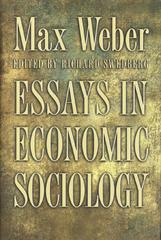help with this question that a attched to this meggage
Suppose the process of producing lightweight parkas by Polly's Parkas is described by the function g = 50K-2(L 4a)\" where q is the number of parkas produced. l-{the number of computerized stitching-machine hours. and L the number of person-hours of labor. In addition to capital and labor, $31] worth of raw materials is used in the production of each parka. Note that = 511(0er ' \""(L 4n)\" and BK E _ 0.2 _ o.2n aLEDK (0.3m 4n) _ By minimizing cost subject to the production function, derive the costminimizing demands for K and L as a function of output (q), wage rates (w), and rental rates on machines {r}. The costminimizing demands for K and L are r 0.2 r 0.2 (\"h K=D.D26q[:] +40andL=onzeql +411 Click to select your anemone). machines (r). By minimizing cost subject to the production function, derive the cost-minimizing demands for K and L as a function of output (q), wage rates (w), and rental rates on The cost-minimizing demands for K and L are 0.2 + 40 and L = 0.0269 5) 0.2 O A. K=0.026q + 40. 0.2 0.8 O B. K=0.026q + 40 and L = 0.007q w 0.8 0.8 O C. K=0.007q T and L = 0.007q 0.8 0.2 OD. K=0.007q w and L = 0.026q + 40. O E. none of the above. Click to select your answer(s).Use these results to derive the total cost function: that is, costs as a function of q, r, w, and the constant $30 per unit materials cost. The total cost function (TC) is O A. TC = 0.033q(r)0.2(w)0.8 + 40w + 30q. O B. TC = 0.033q(r)0.(w)0.2 + 30q. O C. TC = 0.033q(r)0.8(w)0.2 O D. TC = 0.033q(r)0.2(w)0.8 + 40w. O E. none of the above. This process requires skilled workers, who earn $16 per hour. The rental rate on the machines used in the process is $80 per hour. At these factor prices, what are total costs as a function of q? Total costs (TC) are O A. TC = 30.728q. O B. TC =9.190q+ 640. Click to select your answer(s).This process requires skilled workers, who earn $18 per hour. The rental rate on the machines used in the process is $30 per hour. At these factor prices, what are total costs as a function of g? Total costs {TC} are 0 A. TC=3l].?28q. O B. TC=9.'lEit]q+6ill O C. TC=3l].?28. O D. TC=DJ2Bq+64ll O E. TC=3l1T28q+54i1 Does this technology exhibit decreasing, constant, or increasing retums to scale? This technology exhibits l: returns to scale. Polly's Parkas plans to produce 600i] parkas per week. At the factor prices given above, how many workers should the rm hire and how many machines should it rent? (Enter your remaining responses rounded to M0 decimal places.) The rm should use worker hours. Click to select your an swens). Does this technology exhibit decreasing, constant, or increasing retums to scale? This technology exhibits 1 returns to scale. Polly's Parkas plans to produce 6001] parkas per week. At the factor prices given above, how many workers should the rm hire and how many machines should it rent? {Eatery-our remaining responses rounded to two decimal places.) The rm should use worker hours. The rm should use machine hours. What are the margina and average costs at this level ofproduction? Marginal cost is $ per unit of output. Average cost is $D. Click to select your answer{s). {











